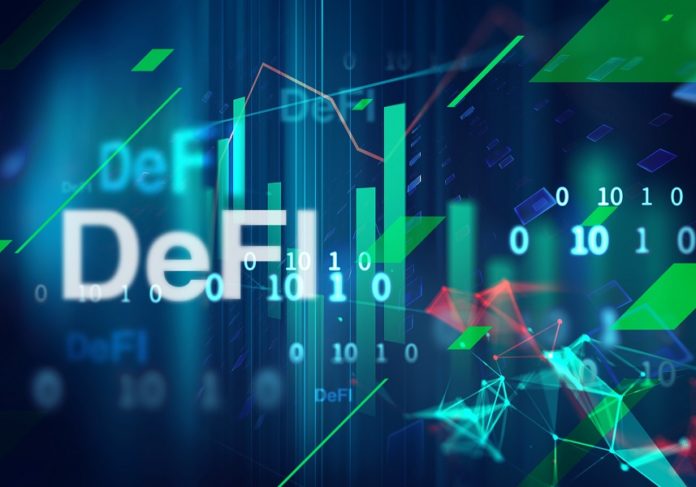Best and demanding Defi crypto project will be discussed in this article. Since the top DeFi initiatives have encouraged investors to shift their funds throughout the market, the DeFi sector has irrevocably impacted the bitcoin industry.
Along with managing to keep their money intact, hodlers are also able to employ leading DeFi projects to push the entire cryptocurrency market to new heights through the usage of yield farming, collateralized tokens, and decentralised exchanges.
Describe DeFi.
Decentralized Finance, or DeFi, is a cryptocurrency industry that aims to integrate much of traditional finance’s capabilities into the cryptocurrency environment. It accomplishes this by decentralising and deconstructing the numerous financial services.
In particular, this industry uses the strength of smart contracts to provide monetary services including lending, borrowing, generating interest, and trading assets. DeFi is said to function somewhat like traditional banking because of this.
Decentralized exchanges (DEX), asset management tools, DeFi infrastructure & Dev Tooling, and many more dapps and infrastructures are typically included in DeFi initiatives.
Top 15 Best DeFi Crypto Projects in 2022
Top 15 Best DeFi Crypto Projects in 2022 are explained here.
1. DAI (DAI)

The Maker Platform and MakerDAO are responsible for the launch and administration of DAI, an Ethereum-based stablecoin.
DAI’s complete decentralisation and integration by hundreds of dapps and DeFi projects set it apart from other well-known stablecoins.
The majority of decentralised coins had poor performance. However, by maintaining a constant price around 1 USD, DAI has increased in use and appeal. In order to maintain the stability of the pegging, the Decentralized Autonomous Organization keeps the stablecoin overcollateralized.
Market value
The market capitalization of the DAI token is at $6.4 billion (at the time of writing).
Distribution & Allocation
Users who store in the collateral can create DAI tokens. The supply and allocation are consequently dynamic. Also check Crypto wallets
Inflation & Vesting
There is no scheduled vesting or inflation for the DAI token. They are created and destroyed as the market changes, with a price that is almost always equal to 1 USD.
Utility
Use cases for the DAI token include:
- Interact with DeFi and Ethereum dapps projects
- Offering liquidity to different protocols
- Correspondence in DeFi ecologies
2. CHAINLINK (LINK)

Oracles are necessary for many dapps in the crypto world to deal with various types of data. Chainlink is currently in charge of oracles.
By utilising a number of oracles and smart contracts, Chainlink offers a decentralised data collection that bridges the gap between blockchain applications and real-world data.
It’s crucial to note that Chainlink as a project has grown and matured to the point where it now awards funding to cryptocurrency projects that it deems beneficial to the ecosystem.
Chainlink has a huge impact in the DeFi space by assisting other projects with oracles to guarantee their functionality.
Synthetic, AAVE, and KyberSwap are a few well-known projects that use Chainlink oracles as a technology.
Market value
The market capitalization of the LINK token is about $3.6 billion (at the time of writing).
Tokens for LINK are pre-minted. The maximum supply therefore equals the total supply.
The distribution of the whole LINK supply, according to Etherscan, is as follows:
- 35% of the total are smart contracts
- 41% of units in use
- Node operators receive 24% of the budget
Inflation & Vesting
There doesn’t seem to be a timeframe for vesting or lock-up for LINK.
However, by using WayBackMachine to examine past CoinMarketCap data, it appears that Chainlink raises the circulating supply by 4-5% annually.
Utility
There are numerous applications for the LINK token, including:
Smart contracting
- Network fees
- Staking
3. AVALANCHE (AVAX)

Launching decentralised finance applications, financial assets, and other services is made possible by the interoperable smart contracts framework known as Avalanche. The platform supports NFTs, application-specific sharding, network-level programmability, and the Ethereum virtual machine.
Avalanche provides a network where users may trade and launch decentralised assets with sub-second transaction confirmations using a proof-of-stake consensus algorithm.
Market value
The market value of the AVAX token is around $9.1 billion (at the time of writing).
Distribution & Allocation
The following is how the 720M token supply is divided:
- Staking incentives of 50%
- Foundation 9.26%
- 10% Off-road sales
- Private Sale, 3.46%
- 2.5% Off Seed
- 7% Endowment for Community & Developers
Strategic Partners: 5%
- 10% Team
- Airdrop of 5%
- Testnet Incentive Program, 0.28%
Inflation & Vesting
AVAX initially set a one-year vesting time for its tokens from the Seed Sale, Private Sale, and Public Sale. However, as staking incentives, the tokens are now being issued annually at a rate of 7–12%.
AVAX uses a burning process to remove the network costs in order to balance the supply entering the market.
Utility
Use cases for the AVAX token include:
- A financial incentive for network security
- Paying Charges
- Staking
- Account base for several blockchains running on Avalanche
4. UNISWAP (UNI)
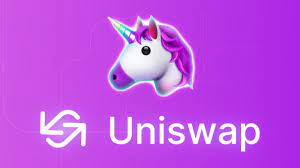
Uniswap is primarily recognised as the market leader in the decentralised exchange market for cryptocurrencies today. Hayden Adams founded the decentralised exchange in 2017, and it is based on the Ethereum network.
The trading protocol was designed to function as an on-chain automated market maker (AMM) that can estimate the value of a cryptocurrency based on the proportions of two different coins in a pool.
Different DeFi tokens and Liquidity Provider tokens can be traded and exchanged using Uniswap. Additionally, even if an ERC20 token isn’t included in the list, you can still build a pair and exchange it for another cryptocurrency if you know the address of the smart contract.
In addition to exchanging, users can also add liquidity to already-existing pools or build new ones to do so. Also check Parrot OS alternatives
Market value
The market capitalization of the UNI token is about $3.8 billion (at the time of writing).
Distribution & Allocation
The UNI tokens were ERC20 tokens that were preminted at genesis. Additionally, the token is distributed as follows, per Uniswap:
- 60% to the Uniswap neighbourhood
- To team members and prospective hires
- To investors: 18.044%
- 0.69% went to advisors.
Inflation & Vesting
The vesting period for the 40% allotted to the team, employees, investors, and advisers at UNI is four years, and it lasts until 2024. Following that, UNI will continue to operate with a constant inflation rate of 2%.
Utility
Use cases for the UNI token include:
- Chain-level governance
- Pool staking
- Compensation for betting in pools
5. SYNTHETIX (SNX)
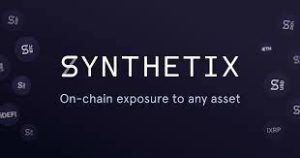
One of the most publicised and rapidly expanding DeFis is Synthetix. It is an Ethereum-based decentralised asset insurance protocol.
Users of Synthetix can create synthetic tokens that are pegged to the value of real-world assets by minting representations of such assets.
The no-arbitrage concept, which permits stakers to burn additional synths, and the open market liquidity for synths on other decentralised exchanges help the synthetic assets keep their peg.
Market value
The market capitalization of the SNX coin is at $624 million (at the time of writing).
Distribution & Allocation
The preminted SNX tokens will be allocated as follows, according to Binance Research, who calculated the total quantity of SNX:
- Pre-Sale: 0.87%
- Private Sale 19.20%
- Public Sale, 3.05%
- 18.49% Team
- 0.77% Consultants
- Foundation (4.62%)
- Partnership Incentives of 1.93%
- 1.16% Airdrops and Bounties
- Staking of 49.92%
Inflation & Vesting
The inflationary money supply plan for the Synthetix token was unveiled in March 2019 and indicated a weekly 1.25 inflation rate decline:
Utility
The following are some use cases for SNX:
- Staking and collateralizing synthetic assets is their main usage.
- Yield Agriculture
- Trading Charges
- Governance
6. OSMOSIS (OSMO)

With the help of the Cosmos SDK, Osmosis was created as an automated market maker for liquidity providers. The platform is built on a proof-of-stake blockchain and provides native cross-chain functions that work with both IBC-enabled chains and chains that are not IBC-enabled, including Ethereum-based ERC20s.
The platform gives liquidity providers, DAO (Decentralized Autonomous Organization) members, and delegators a range of incentives, including:
Ownership of pools by the government for staked liquidity providers (they can adjust parameters based on market conditions and how competitive the pool is, among others)
absolute voting technique for controlling LPs (LP providers can vote to change any pool parameter, such as swap fees, token rates, reward incentives, and curve algorithms)
Osmosis’ Superfluid Staking, which enables token holders to engage in both staking and liquidity mining simultaneously, is built on the OSMO governance token.
Market value
The market capitalization of the OSMO cryptocurrency is at $622 million (at the time of writing).
Distribution & Allocation
The following is how the OSMO tokens are distributed, which were preminted at genesis:
- Staking Rewards of 25%
- 25% Vesting for Developers
- 45% Mining Incentives for Liquidity
- 5% Public Pool
Inflation & Vesting
The intended inflation rate for OSMO, an inflationary currency, is 76%; the annual inflation rate is reduced by 1/3. The token had a 100 million OSMO initial supply when it launched in June 2021, and the following steps are being taken to raise that number:
Year 1: 300 million OSMO
Second year: 200m OSMO
Year 3: 133 million OSMO
Utility
Use cases for the OSMO token include:
Chain-level governance
- Pool staking
- Compensation for betting in pools
7. FRAX (FRAX & FXS)

Aiming to create highly scalable, decentralised, and algorithmic digital currency, Frax is an open-source, permissionless, on-chain fractional-algorithmic stablecoin system.
The protocol can support cross-chain implementations in the future and is currently based on Ethereum. Also check LinkFolio alternatives
The basis of the protocol has two tokens. The FRAX token is a distinct $1 stablecoin, and algorithms and collaterals are used to keep track of its price. The governance token that gathers fees, seigniorage money, and excess collateral value is called the Frax Shares (FXS).
Market value
The market capitalization of the FRAX token is over $1.4 billion, while that of the FXS is approximately $506 million. (At the time this was written)
Distribution & Allocation
Given that FRAX is designed to be always in use, loan and borrowing processes make up the majority of its allocation and distribution.
The following is the distribution of tokens for FXS:
- Uniswap Listing with a 60% Community Allocation
- Development Fund of 5%
- 20% of the founding team
- 12 percent of accredited private investors
- Early contributors and strategic advisors, 3%
Inflation & Vesting
In the case of FRAX, the token supply increases in line with the level of demand.
For FXS, the genesis phase saw the creation of 100 million tokens. The amount of FXS that is coined and burned, however, determines how much total supply is available at any given time.
The tokens are released into circulation from the total supply of FXS through an emission system that started off emitting at a rate of 56,000 FXS per day and is now emitting 49,315 FXS per day.
In addition, 5% of the 12% of FXS that were allotted to accredited private investors were vested over the first six months, and the remaining 5% were vested over a year with a cliff of six months. Additionally, the 3% of FXS given to early contributors and strategic advisors will vest over a period of three years.
Utility
The FRAX token offers the following in terms of utility:
- Offering liquidity to different protocols
- Correspondence in DeFi ecologies
- Applied to protocols for borrowing and lending
Regarding FXS, the token’s utility is as follows:
- Governance
- Builds up fees
- System of recapitalization
8. UMA (UMA)

The UMA (Universal Market Access) protocol allows for the creation of synthetic derivatives on anything with a price using trustless contracts.
The protocol does away with the requirement for a broker, clearinghouse, or exchange by enabling two counterparts to execute a deal using a trustless smart contract. Each side’s margin is automatically adjusted by the self-enforcing smart contract, and it also makes sure that the trades are constantly collateralized.
Additionally, UMA distinguishes itself from other DeFi protocols by minimising the need on off-chain oracle pricing feeds, which eliminates the possibility of oracle manipulation.
Market value
The market capitalization of the UMA coin is at $221 million (at the time of writing).
Distribution & Allocation
The following is how UMA tokens will be distributed:
- Uniswap Initial Listing of 2%
- Future Token Sales at 14.5%
- 35% Users and Developers
- Founders, early contributors, and investors account for 48.5%
Inflation & Vesting
Although the UMA token has no set unlocking timeline, we do know that it has a 0.05% inflation rate that raises the supply every time a vote is conducted. To counteract oracle corruption profits, the platform also burns tokens.
Utility
The UMA token’s utility includes the following:
- Managing the UMA ecosphere
- Disputes
- Fees
9. COMPUND (COMP)
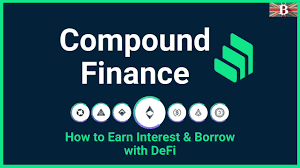
One of the most well-known DeFi protocols is compound, which allows investors to earn money by putting their cryptocurrencies in a liquidity pool and collecting interest.
The liquidity providers receive cTokens (for ETH – cETH) in return for providing liquidity, which they can subsequently redeem and earn interest on.
The protocol also permits 50–75% loan–to–value borrowing in exchange for the deposit of a cryptocurrency as security.
COMP, the native token of the platform, is a governance token that can be used to suggest, discuss, and vote on protocol improvements.
Market value
The market capitalization of the COMP cryptocurrency is at $480 million (at the time of writing).
Distribution & Allocation
The distribution of the pre-minted COMP tokens is as follows:
- Shareholders of Compound Labs, 23.96%
- 22.26% To the crew and founders
- 3.72% Upcoming teammates
- Users of Protocol: 42.31%
- 7.75% for the community to improve governance using alternative methods
Inflation & Vesting
Although the COMP coins cannot be mined, the Compound Labs team nonetheless issues 2800 new tokens every day, of which 50% are distributed to lenders and 50% to borrowers.
The founders’ and team’s 22.26% portion is also subject to a 4 year vesting period.
Utility
Use cases for the COMP token include:
- Governance
- Disbursing incentives
- Staking
- Lending and borrowing
10.THE Graph (GRT)

For blockchain networks like Ethereum, IPFS, and NEAR, data queries are handled through the indexing protocol known as The Graph.
The protocol can be used to provide API endpoints for servers used by DeFi dapps or other Web3 ecosystems, and these servers can query the data from smart contracts.
At its core, GRT is an ERC20 token that is used for network resource allocation. It is employed to reward Delegators, Indexers, and Curators for working on the network and staking.
Market value
The market capitalization of the GRT coin is about $1.3 billion (at the time of writing).
Distribution & Allocation
The preminted GRT tokens are distributed as follows:
- Testnet Indexer Rewards of 3.0%
- 3% Grants for Curator Programs
- 17% Early Backers & Backers + 17%
- Graph Foundation, 20%
- 6.0% GRT Sale
- Early Team & Advisors: 23%
- 3% for educational initiatives and rewards
Edge & Node: 8%
- 3.0% New Issue
Inflation & Vesting
GRT unlocked extra tokens every six months and began with 12.5% of the total supply in circulation.
A new issuance schedule for the token that begins at 3% annually as well as a token burning system with a predicted 1% of query fees and all deposit taxes are also included.
Utility
Use cases for the GRT token include:
- Payment for rewards
- Staking
- Payment of fees on the Query Market
11. MAKER (MKR) (MKR)

Maker is a large project that consists of the software platform Maker Protocol that enables users to issue and administer DAI and the decentralised organisation MakerDAO.
Based on the Ethereum blockchain, the project’s decentralised administration and software platform are controlled by the MKR ERC20 token.
The main function of MKR inside the ecosystem is voting.
Maker is one of the first projects to attempt developing decentralised financial products on top of blockchains that support smart contracts in the DeFi context.
In addition to being one of the first, MKR is distinctive in that it enables holders to actively take part in DAI governance.
Depending on the quantity of staked Maker tokens, all MKR holders have the ability to vote on a variety of changes to the Maker Protocol.
Market value
The market capitalization of the MKR cryptocurrency is about $1.6 billion (at the time of writing).
Distribution & Allocation
The pre-mined MKR tokens have the following distribution of the total supply, per Etherscan:
Maker: Governance Contract; 17.76%
Maker: MCD Pause Proxy • 8.57%
- 55,25% Investors, exchanges, and liquidity providers
- 18.42% Additional accounts
Inflation & Vesting
The hard cap for MKR is 1,005,577. As a result, the quantity of tokens won’t rise past that point. A buyback-and-burn scheme is also used by the Maker system to balance the price and the number of tokens in circulation, in addition to the locked tokens.
Utility
Use cases for the MKR token include:
- Governance
- Paying Charges
- Staking
- System of recapitalization
12. PANCAKESWAP (CAKE)

On the Binance Smart Chain, PancakeSwap is an Automated Market Maker and Decentralized Exchange that doesn’t demand KYC. As a part of the company’s DeFi acceleration programme on the Binance Smart Chain, Binance provided funds for the project.
PancakeSwap is essentially a copy of UniSwap, but it also has a few fresh features:
- Two yield farming tools that come built-in that let you stake liquidity provider tokens to earn cake or stake cake to earn more cake or other BEP20 tokens.
- Raffle tickets
- A market for auctioning off different NFTs
- A first-time farm sale
- Gamification using community teams, leader boards, different tasks, and accomplishments
Market value
Market capitalization for the CAKE cryptocurrency is $1.4 billion (at the time of writing).
Distribution & Allocation
The distribution of the preminted BEP20 CAKE token is as follows, via BscScan:
- The main staking contract’s 33.55% lock
- 58.89% of wallets were used to burn tokens.
- 17.87% allotted to different holders and smart contracts
Inflation & Vesting
Even after accounting for the burning processes, CAKE operates with a daily inflation of 750,000 CAKE and has no maximum supply limit. However, Yield producers receive 60% of the freshly issued tokens, whereas Syrup Pools receive 40%.
CAKE may seem to have devastating inflation in terms of tokenomics. The developers constantly tweak the burning parameters because they want the token to remain deflationary.
Utility
Staking is the main application of the CAKE token. The token is additionally utilised for:
- Crowdsourcing
- Auctions for NFTs
- Participation in various PANCAKESWAP environment aspects
13. AAVE (AAVE)
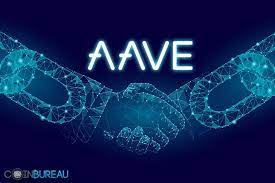
In the decentralised lending and borrowing system known as AAVE, lenders can earn interest by depositing cryptocurrency into specifically designed liquidity pools, which borrowers can utilise to obtain loans by pledging their digital assets as security. Through the use of smart contracts, lending and borrowing are conducted.
The primary security component of the AAVE Protocol is the deflationary AAVE token, which is based on the ERC20 standard.
Market value
Market capitalization for the AAVE token is $1.2 billion (at the time of writing).
Distribution & Allocation
The 13 million AAVE tokens already in circulation were redeemed by trading them for LAND at a 100:1 ratio. This is how the distribution is made:
About 13 million AAVE are allotted to the neighbourhood
- Reserve of three million AAVE
Inflation & Vesting
Since tokens are burnt whenever the protocol collects fees, the AAVE token’s circulation is correlated to the total value locked on Aave.
Utility
The following are some uses for the AAVE token:
- Borrowing & lending
- Discounts on fees
- Governance
- Staking the safety module’s support.
14. FANTOM (FTM)

FANTOM is a smart contracts platform that uses its own directed acyclic graph consensus algorithm to offer DeFi services to developers. The platform approaches the market with tools that make it easier to integrate existing dapps, and it provides a thorough staking incentive structure as well as built-in DeFi instruments.
The Layer-1 Blockchain, Lachesis, supports the DeFi smart contracts and related services. However, the Fantom echosystem also offers security for other layers, such as Opera, the EVM-compatible smart contract chain of Fantom.
The overall goal of the project is to “provide compatibility amongst all transaction bodies worldwide.”
Market value
Market capitalization for the FTM coin is $897 million (at the time of writing).
Distribution & Allocation
The 3.175 billion FTM tokens were preminted and issued when the mainnet opened in December 2019. This is how the distribution is made:
- 37% of investors are private
- 1.57% of investors are retail
15% of advisors
10% of the group
- Reserve funds of 4%
- 31% is devoted to stake payouts.
Inflation & Vesting
Fantom premined its tokens, and the only way to increase the supply currently in circulation is through awarding staking rewards. Approximately 0.5 billion FTM are now distributed everyday as staking incentives.
Utility
The following are some uses for the FTM token:
- Borrowing & lending
- Producing artificial assets
- Governance
- Delegation and staking
15. REN (REN)

A decentralised interoperability protocol called REN aims to make it possible for cryptocurrency users to move any token between any blockchains. The cross-chain value transfer solution uses pre-existing smart contracts to transfer liquidity from one ecosystem to another instead of creating wrapped or synthetic tokens.
RenBTC and wBTC share a similar idea. The distinction lies in the fact that, in contrast to wBTC, Ren’s Bitcoin is maintained on a network of decentralised nodes known as the Dark Nodes and is controlled by code.
Additionally, users can submit as many requests as they like, whenever they like, thanks to the REN protocol’s machine-like operation.
Many DeFis can be connected with the Ren Virtual Machine, which can add liquidity while not requiring KYC.
The impact of Ren VM on hodlers is considerable since it enables those who have Bitcoin to contribute their cash to lending protocols and earn interest rather than holding them idle.
Fees are paid by nodes in the cryptocurrency that is traded through RenVM.
A node operator needs to obtain 100,000 REN in order to operate one.
Market value
The market capitalization of the REN coin is at $153 million (at the time of writing).
Distribution & Allocation
Ren is distributed as follows, per Binance Research, and was initially preminted as an ERC20 token:
- Dark nodes: 18.67% Bonded
Reserve funds: 19.9%
- ten percent for collaborations, development, and associated initiatives.
Investors and lending pools make up 56.6%.
- Other holders, 13.5%
Inflation & Vesting
All Ren tokens are in circulation, but the bonding tokens are no longer available. Additionally, additional tokens will be linked as the demand for operational nodes rises.
Utility
The main application is as a Bond to run a dark node.
Final Through
We anticipate hundreds of startups with incredible tokenomics and capabilities that will advance cryptocurrency in 2022.
These projects are among the top 15 DeFi crypto projects because they demonstrate the market’s emerging potential rather than offering investment advice.
Keep an eye out for the best prospects as a result, and don’t forget to conduct your own study. Because it appears that there is still more potential for bitcoin and blockchain to transform the financial industry.
Interoperability with blockchains: What’s the Deal?
The quick development of decentralised finance has demonstrated the value of connectivity in the cryptocurrency community. Consequently, blockchain compatibility is
Introduction to Ethereum: A Complete Beginner’s Guide
If you believe that Ethereum has such a high value because it has the second-largest market cap

